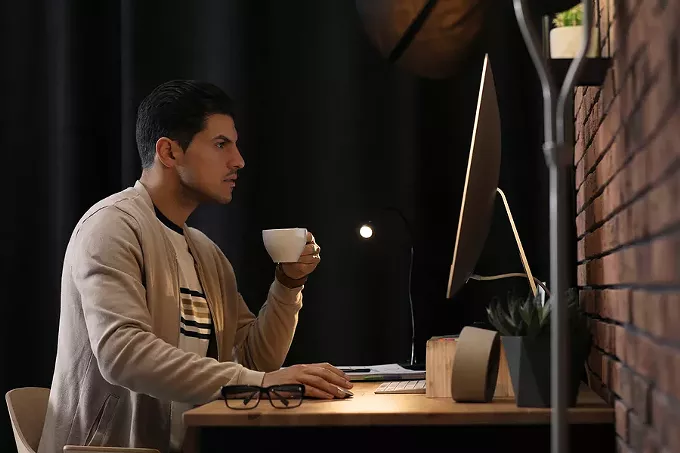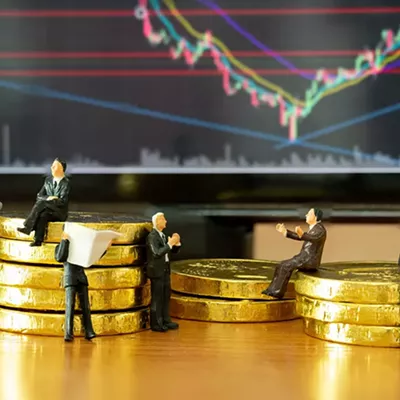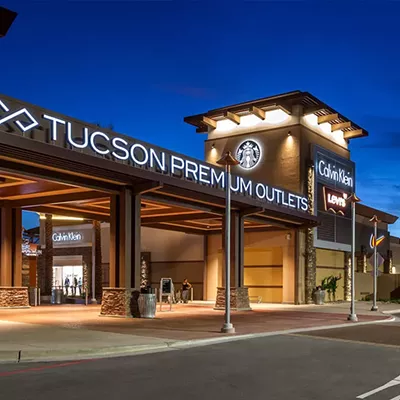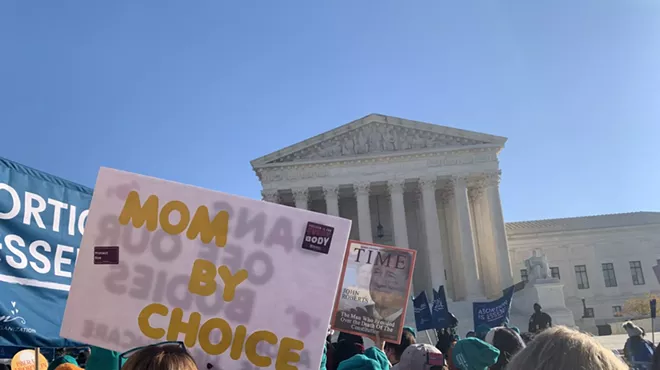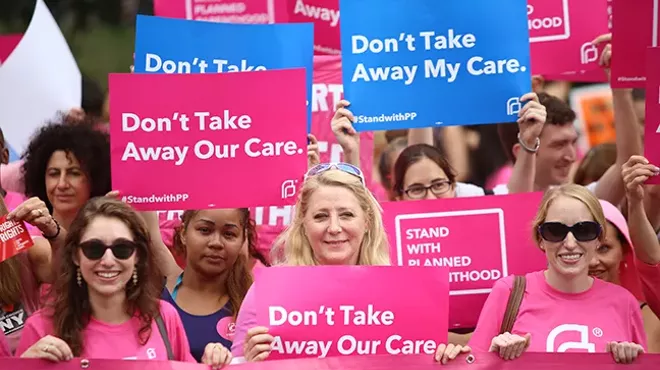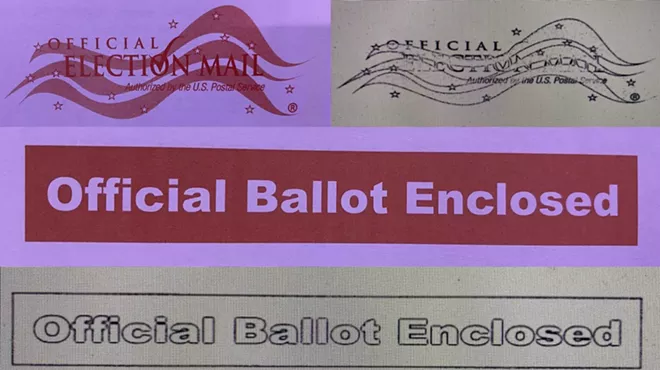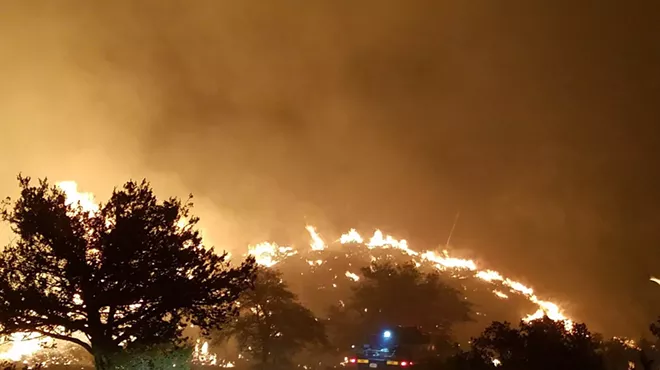Monday, May 11, 2020
I’m an Investigative Journalist. These Are the Questions I Asked About the Viral “Plandemic” Video.
ProPublica is a nonprofit newsroom that investigates abuses of power. Click here to read their biggest stories as soon as they’re published.
The links to the viral video “Plandemic” started showing up in my Facebook feed Wednesday. “Very interesting,” one of my friends wrote about it. I saw several subsequent posts about it, and then my brother texted me, “Got a sec?”
My brother is a pastor in Colorado and had someone he respects urge him to watch “Plandemic,” a 26-minute video that promises to reveal the “hidden agenda” behind the COVID-19 pandemic. I called him and he shared his concern: People seem to be taking the conspiracy theories presented in “Plandemic” seriously. He wondered if I could write something up that he could pass along to them, to help people distinguish between sound reporting and conspiracy thinking or propaganda.
So I watched “Plandemic.” I did not find it credible, as I will explain below. YouTube, Facebook and Vimeo have since removed it from their platforms for violating their guidelines. Now it’s available on its own site.
Sensational videos, memes, rants and more about COVID-19 are likely to keep coming. With society polarized and deep distrust of the media, the government and other institutions, such content is a way for bad actors to sow discord, mostly via social media. We saw it with Russia in the 2016 election and we should expect it to continue.
But what surprised me is how easily “Plandemic” sank its hooks into some of my friends. My brother also felt alarmed that his own church members and leaders in other churches might be tempted to buy into it.
The purpose of this column is not to skewer “Plandemic.” My goal is to offer some criteria for sifting through all the content we see every day, so we can tell the difference between fair reporting and something so biased it should not be taken seriously.
Here’s a checklist, some of which I shared with my friends on Facebook, to help interrogate any content — and that includes what we publish at ProPublica.
Is the Presentation One-Sided?
There’s never just one side to a story. I mentioned this point in 2018 when I wrote about my faith and the biblical basis for investigative reporting. One of my favorite Proverbs says, “The first to state his case seems right until another comes and cross-examines him.” So a fair presentation should at least acknowledge opposing points of view.
I didn’t see this in “Plandemic,” so I called the filmmaker, Mikki Willis, who is also the film’s narrator, to ask him whether I had somehow missed the other side of the argument. I had not. “The other side of the argument plays 24/7 on every screen in every airport and on every phone and in every home,” Willis said. “The people are only seeing one side of the story all the time. This is the other side of the story. This is not a piece that’s intended to be perfectly balanced.”
I asked Willis if it was fair to call his film “propaganda,” which the Oxford dictionary defines as “information, especially of a biased or misleading nature, used to promote or publicize a particular political cause or point of view.”
He said he doesn’t feel there’s anything misleading in his film, but otherwise the definition fits. And based on that definition he feels 100% of news reporting is propaganda. “What isn’t propaganda these days?” he asked. “In that sense, what we’re doing is fighting fire with fire.”
Is There an Independent Pursuit of the Truth?
The star of “Plandemic,” medical researcher Judy Mikovits, is controversial. The magazine Science reports that it published and then retracted one of her papers in 2011. A search warrant provided to ProPublica by one of her former attorneys shows she was fired from her position at Whittemore Peterson Institute, a research center in Nevada, in September 2011. Then she allegedly stole notebooks and a laptop computer from the Institute, the search warrant said, leading to an arrest warrant for alleged possession of stolen property and unlawful taking of computer data. She was arrested on Nov. 18, 2011, but denied wrongdoing. The charges were dropped.
But “Plandemic” ignores or brushes past these facts and portrays her as an embattled whistleblower. “So you made a discovery that conflicted with the agreed-upon narrative?” Willis says to Mikovits, introducing her as a victim. “And for that, they did everything in their powers to destroy your life.”
A typical viewer is not going to know the details about Mikovits’ background. But as the primary source of controversial information being presented as fact, it’s worth an online search. The fact-checking site PolitiFact details her arrest and criminal charges. Clearly, there’s more to her story than what’s presented in “Plandemic.” That should give us pause when we assess its credibility.
Is There a Careful Adherence to the Facts?
In “Plandemic,” Willis asks Mikovits about her arrest: “What did they charge you with?”
“Nothing,” she replies. “I was held in jail, with no charges.”
Being charged with a crime is one of those concrete facts that we can check out. Science magazine reported Mikovits’ arrest and felony charge. I also found a civil lawsuit she filed against the Whittemore Peterson Institute in 2014 in the U.S. District Court for the Southern District of California. “Mikovits was arrested on criminal charges…” her complaint says in the case, which was eventually dismissed.
I asked Willis about the apparent discrepancy, where she said in his film that she wasn’t charged, when court documents show that she was charged. After my inquiry, he said he spoke to Mikovits and now feels it is clear that she meant that the charges were dropped.
I tracked down Mikovits and she said what she meant in the film is that there were no charges of any type of wrongdoing that would have led to her being charged with being a fugitive from justice. She admitted that all the controversy has been hard for her to sort out. “I’ve been confused for a decade,” she told me. She said she would try to be more clear in the future when she talks about the criminal charge: “I’ll try to learn to say it differently,” she said.
This underscores the importance of careful verification, and it distinguishes the craft of journalism from other forms of information sharing. People often speak imprecisely when they’re telling their stories. It’s our duty to nail down precisely what they do and do not mean, and verify it independently. If we don’t, we risk undermining their credibility and ours. That’s in part why we at ProPublica and many other journalists often link directly to our underlying source documents, so you can verify the information yourself.
Are Those Accused Allowed to Respond?
Dr. Anthony Fauci, director of the National Institute of Allergy and Infectious Diseases, is one of the nation’s leaders in the response to the coronavirus. In “Plandemic,” Mikovits accuses Fauci of a cover-up and of paying off people who perpetrate fraud, among other things. PolitiFact found no evidence to support the allegations against Fauci.
Every time I write a story that accuses someone of wrongdoing I call them and urge them to explain the situation from their perspective. This is standard in mainstream journalism. Sometimes I’ve gone to extreme lengths to get comments from someone who will be portrayed unfavorably in my story — traveling to another state and showing up at their office and their home and leaving a note if they are not there to meet me. “Plandemic” doesn’t indicate whether the filmmakers reached out to Fauci for his version of the story. So I asked Willis about it. “We did not,” he told me.
Are All Sources Named and Cited, and if Not, Is the Reason Explained?
All sources should be identified, with their credentials, so viewers can verify their expertise or possible biases. If they can’t be for some reason, then that should be explained. “Plandemic” features unnamed people in medical scrubs, presented as doctors, saying they’re being wrongly pressured to add COVID-19 on people’s death certificates or are not being allowed to use the drug hydroxychloroquine to treat patients. But the speakers are not named, so we can’t really tell who they are, or even if they are doctors at all. That makes it impossible to tell if they are credible.
I asked Willis why he didn’t name those people. He told me he was in a hurry to release the 26-minute version of “Plandemic,” but the doctors will be named in the final version. “We should have done that,” he said.
Does the Work Claim Some Secret Knowledge?
“Plandemic” calls itself a documentary that reveals “the hidden agenda behind COVID-19.” We are in the midst of a global pandemic where few people in the world can figure out what is happening or the right way to respond, let alone agendas. We have almost every journalist in the country writing about this. And if the truth about a conspiracy is out there, many people have an incentive to share it. But “Plandemic” would like us to think it’s presenting some exclusive bit of secret knowledge that is going to get at the real story. That’s not likely.
Plus, to be honest, there were so many conspiratorial details stacked on top of each other in the film I couldn’t keep them straight. When I spoke to Willis I told him I was having a hard time understanding his point. Then I took a stab at what I thought was the main thrust of his argument. “Are you saying that powerful people planned the pandemic and made it happen so they could get rich by making everyone get vaccines?” I asked.
It turns out Willis isn’t sure either. “We’re in the exploratory phase,” he told me. “I don’t know, to be clear, if it’s an intentional or naturally occurring situation. I have no idea.”
Then he went on to say that the pandemic is being politicized and used to take away our civil liberties and leverage other political policies. “Certain forces” have latched onto the situation, he said. “It’s too fishy.”
He had me at, “I have no idea.” That sums it up. This is a vast pandemic and massive catastrophe. Our country wasn’t prepared for it, and the response by our top leaders has been disjointed. We’re restricted to our homes. Many people have lost their jobs and some are afraid or sick or dying. That makes us vulnerable to exploitation by people who will present inaccurate or intellectually dishonest information that promises to tell us the truth.
Perhaps “Plandemic” is guilty of sloppy storytelling, or maybe people really do believe the things they’re saying in the video. Or perhaps they’re being intentionally dishonest, or it’s a biased connecting of the dots rooted in personal and professional grievances. I don’t know because I can’t get inside their heads to judge their motives.
Ultimately, we’re all going to need to be more savvy consumers when it comes to information, no matter how slickly it’s presented. This may be but a signal of what’s to come in the run-up to the 2020 presidential election, when memes and ads of unknown origin come across our social media feeds. There are standards for judging the credibility of the media we take in every day, so let’s apply them.
The links to the viral video “Plandemic” started showing up in my Facebook feed Wednesday. “Very interesting,” one of my friends wrote about it. I saw several subsequent posts about it, and then my brother texted me, “Got a sec?”
My brother is a pastor in Colorado and had someone he respects urge him to watch “Plandemic,” a 26-minute video that promises to reveal the “hidden agenda” behind the COVID-19 pandemic. I called him and he shared his concern: People seem to be taking the conspiracy theories presented in “Plandemic” seriously. He wondered if I could write something up that he could pass along to them, to help people distinguish between sound reporting and conspiracy thinking or propaganda.
So I watched “Plandemic.” I did not find it credible, as I will explain below. YouTube, Facebook and Vimeo have since removed it from their platforms for violating their guidelines. Now it’s available on its own site.
Sensational videos, memes, rants and more about COVID-19 are likely to keep coming. With society polarized and deep distrust of the media, the government and other institutions, such content is a way for bad actors to sow discord, mostly via social media. We saw it with Russia in the 2016 election and we should expect it to continue.
But what surprised me is how easily “Plandemic” sank its hooks into some of my friends. My brother also felt alarmed that his own church members and leaders in other churches might be tempted to buy into it.
The purpose of this column is not to skewer “Plandemic.” My goal is to offer some criteria for sifting through all the content we see every day, so we can tell the difference between fair reporting and something so biased it should not be taken seriously.
Here’s a checklist, some of which I shared with my friends on Facebook, to help interrogate any content — and that includes what we publish at ProPublica.
Is the Presentation One-Sided?
There’s never just one side to a story. I mentioned this point in 2018 when I wrote about my faith and the biblical basis for investigative reporting. One of my favorite Proverbs says, “The first to state his case seems right until another comes and cross-examines him.” So a fair presentation should at least acknowledge opposing points of view.
I didn’t see this in “Plandemic,” so I called the filmmaker, Mikki Willis, who is also the film’s narrator, to ask him whether I had somehow missed the other side of the argument. I had not. “The other side of the argument plays 24/7 on every screen in every airport and on every phone and in every home,” Willis said. “The people are only seeing one side of the story all the time. This is the other side of the story. This is not a piece that’s intended to be perfectly balanced.”
I asked Willis if it was fair to call his film “propaganda,” which the Oxford dictionary defines as “information, especially of a biased or misleading nature, used to promote or publicize a particular political cause or point of view.”
He said he doesn’t feel there’s anything misleading in his film, but otherwise the definition fits. And based on that definition he feels 100% of news reporting is propaganda. “What isn’t propaganda these days?” he asked. “In that sense, what we’re doing is fighting fire with fire.”
Is There an Independent Pursuit of the Truth?
The star of “Plandemic,” medical researcher Judy Mikovits, is controversial. The magazine Science reports that it published and then retracted one of her papers in 2011. A search warrant provided to ProPublica by one of her former attorneys shows she was fired from her position at Whittemore Peterson Institute, a research center in Nevada, in September 2011. Then she allegedly stole notebooks and a laptop computer from the Institute, the search warrant said, leading to an arrest warrant for alleged possession of stolen property and unlawful taking of computer data. She was arrested on Nov. 18, 2011, but denied wrongdoing. The charges were dropped.
But “Plandemic” ignores or brushes past these facts and portrays her as an embattled whistleblower. “So you made a discovery that conflicted with the agreed-upon narrative?” Willis says to Mikovits, introducing her as a victim. “And for that, they did everything in their powers to destroy your life.”
A typical viewer is not going to know the details about Mikovits’ background. But as the primary source of controversial information being presented as fact, it’s worth an online search. The fact-checking site PolitiFact details her arrest and criminal charges. Clearly, there’s more to her story than what’s presented in “Plandemic.” That should give us pause when we assess its credibility.
Is There a Careful Adherence to the Facts?
In “Plandemic,” Willis asks Mikovits about her arrest: “What did they charge you with?”
“Nothing,” she replies. “I was held in jail, with no charges.”
Being charged with a crime is one of those concrete facts that we can check out. Science magazine reported Mikovits’ arrest and felony charge. I also found a civil lawsuit she filed against the Whittemore Peterson Institute in 2014 in the U.S. District Court for the Southern District of California. “Mikovits was arrested on criminal charges…” her complaint says in the case, which was eventually dismissed.
I asked Willis about the apparent discrepancy, where she said in his film that she wasn’t charged, when court documents show that she was charged. After my inquiry, he said he spoke to Mikovits and now feels it is clear that she meant that the charges were dropped.
I tracked down Mikovits and she said what she meant in the film is that there were no charges of any type of wrongdoing that would have led to her being charged with being a fugitive from justice. She admitted that all the controversy has been hard for her to sort out. “I’ve been confused for a decade,” she told me. She said she would try to be more clear in the future when she talks about the criminal charge: “I’ll try to learn to say it differently,” she said.
This underscores the importance of careful verification, and it distinguishes the craft of journalism from other forms of information sharing. People often speak imprecisely when they’re telling their stories. It’s our duty to nail down precisely what they do and do not mean, and verify it independently. If we don’t, we risk undermining their credibility and ours. That’s in part why we at ProPublica and many other journalists often link directly to our underlying source documents, so you can verify the information yourself.
Are Those Accused Allowed to Respond?
Dr. Anthony Fauci, director of the National Institute of Allergy and Infectious Diseases, is one of the nation’s leaders in the response to the coronavirus. In “Plandemic,” Mikovits accuses Fauci of a cover-up and of paying off people who perpetrate fraud, among other things. PolitiFact found no evidence to support the allegations against Fauci.
Every time I write a story that accuses someone of wrongdoing I call them and urge them to explain the situation from their perspective. This is standard in mainstream journalism. Sometimes I’ve gone to extreme lengths to get comments from someone who will be portrayed unfavorably in my story — traveling to another state and showing up at their office and their home and leaving a note if they are not there to meet me. “Plandemic” doesn’t indicate whether the filmmakers reached out to Fauci for his version of the story. So I asked Willis about it. “We did not,” he told me.
Are All Sources Named and Cited, and if Not, Is the Reason Explained?
All sources should be identified, with their credentials, so viewers can verify their expertise or possible biases. If they can’t be for some reason, then that should be explained. “Plandemic” features unnamed people in medical scrubs, presented as doctors, saying they’re being wrongly pressured to add COVID-19 on people’s death certificates or are not being allowed to use the drug hydroxychloroquine to treat patients. But the speakers are not named, so we can’t really tell who they are, or even if they are doctors at all. That makes it impossible to tell if they are credible.
I asked Willis why he didn’t name those people. He told me he was in a hurry to release the 26-minute version of “Plandemic,” but the doctors will be named in the final version. “We should have done that,” he said.
Does the Work Claim Some Secret Knowledge?
“Plandemic” calls itself a documentary that reveals “the hidden agenda behind COVID-19.” We are in the midst of a global pandemic where few people in the world can figure out what is happening or the right way to respond, let alone agendas. We have almost every journalist in the country writing about this. And if the truth about a conspiracy is out there, many people have an incentive to share it. But “Plandemic” would like us to think it’s presenting some exclusive bit of secret knowledge that is going to get at the real story. That’s not likely.
Plus, to be honest, there were so many conspiratorial details stacked on top of each other in the film I couldn’t keep them straight. When I spoke to Willis I told him I was having a hard time understanding his point. Then I took a stab at what I thought was the main thrust of his argument. “Are you saying that powerful people planned the pandemic and made it happen so they could get rich by making everyone get vaccines?” I asked.
It turns out Willis isn’t sure either. “We’re in the exploratory phase,” he told me. “I don’t know, to be clear, if it’s an intentional or naturally occurring situation. I have no idea.”
Then he went on to say that the pandemic is being politicized and used to take away our civil liberties and leverage other political policies. “Certain forces” have latched onto the situation, he said. “It’s too fishy.”
He had me at, “I have no idea.” That sums it up. This is a vast pandemic and massive catastrophe. Our country wasn’t prepared for it, and the response by our top leaders has been disjointed. We’re restricted to our homes. Many people have lost their jobs and some are afraid or sick or dying. That makes us vulnerable to exploitation by people who will present inaccurate or intellectually dishonest information that promises to tell us the truth.
Perhaps “Plandemic” is guilty of sloppy storytelling, or maybe people really do believe the things they’re saying in the video. Or perhaps they’re being intentionally dishonest, or it’s a biased connecting of the dots rooted in personal and professional grievances. I don’t know because I can’t get inside their heads to judge their motives.
Ultimately, we’re all going to need to be more savvy consumers when it comes to information, no matter how slickly it’s presented. This may be but a signal of what’s to come in the run-up to the 2020 presidential election, when memes and ads of unknown origin come across our social media feeds. There are standards for judging the credibility of the media we take in every day, so let’s apply them.


